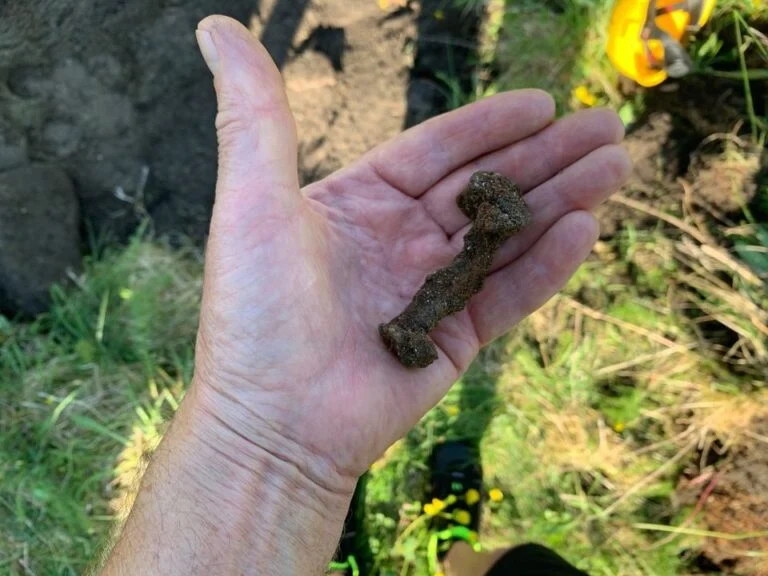Norwegian archaeologists have made an astonishing discovery in Leka, Central Norway, unearthing Scandinavia’s oldest known ship burial, dating back to around 700 CE. This find redefines our understanding of the region’s maritime history before the Viking Age.
A Historic Find at Herlaugshaugen
The excavation took place at Herlaugshaugen, a 60-metre burial mound mentioned in Snorri’s royal sagas as King Herlaug’s final resting place. Earlier excavations in the 1700s revealed a wall, iron nails, and other artifacts, including a seated skeleton with a sword. However, these findings were lost in the early 1920s. The recent mission, led by Geir Grønnesby from NTNU Science Museum, aimed to date the mound and confirm the presence of a ship. The discovery of large nails, indicative of a ship burial, has pushed back the origins of such traditions to the Merovingian period, around 700 CE.

Implications for Pre-Viking Maritime History
This revelation significantly altered the narrative of the pre-Viking era, suggesting advanced maritime capabilities in the region much earlier than previously believed. The size and complexity of the ship found at Herlaugshaugen indicate a society with extensive maritime knowledge and resources. It also suggests that the region’s prosperity stemmed from agriculture trade and maritime activities. The ship burial points to early and extensive contacts with the wider world, with evidence of active commerce from Trøndelag to the Continent from the mid-700s onwards. This discovery is rare for the Merovingian period, a time known for sparse archaeological finds, making it a crucial piece in understanding early Scandinavian history.